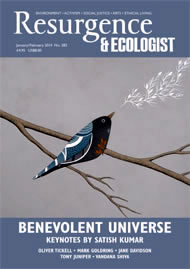Everyone loves trees, don’t they? Particularly artists? Well – yes and no.
As you might expect – and as is abundantly shown in this thought-provoking book originally published to coincide with a two-part exhibition at the St Barbe Museum and Art Gallery in Lymington – trees are not merely seen by artists as natural objects of magnificent beauty. As one contributor, Hannah Maybank, puts it, “they offer us the prospect of darkness and light, arbour and menace”.
Another artist, Clare Woods, is drawn to the “human” in them – “a branch that looks like an arm, a fallen tree that looks like a sleeping person...”. For Lesley Slight, “old woods...have a residue of the ancient and primordial, and a timeless quality...”.
Michael Porter observes that “there is something about trees that is both menacing and reassuring”. Mick Moon, although he appreciates the intricate beauty of trees, is “more interested in them as a device offered for abstraction and articulation of surface”.
Nick Schlee says he often thinks of trees “as being individuals in themselves, as scurrying crowds of people or sometimes as ranked armies waiting to attack”.
The value of this book is that all the paintings and drawings that were exhibited are reproduced in it. It discusses in a number of essays the history of its subject.
The first half of the book is history. A fine and varied selection of works by artists of the ‘past’ – from the 18th to the 20th century – is illustrated. Samuel Palmer and John Constable preside, the ‘visionary’ and the ‘naturalist’. Their influence on later painters is unquestionable, well into the 20th Century. Palmer’s intensity was a crucial ingredient in the development of the work of Graham Sutherland, John Craxton, Eric Ravilious and Clare Leighton.
The second half of the book is devoted to contemporary artists (a few of them quoted above) who explore the potential of trees. Some of them recognise in their work the long history of trees in art; but others certainly investigate ways in which we might look at trees today with as little history as possible, by using modern technology as well as old-fashioned painterly skills and media. Photography and digital images are of central interest to many of them, and there are tributes paid to the work of the digitally entranced David Hockney in this respect (though he is not included) and to a photorealist like John Salt (who is).
Hockney seems to use technology as a way of stimulating his own eyes to appreciate freshly – to re-see if you like – trees. Salt, while he “likes to include trees” in his paintings, creates a photographic realism that is so inclusive that there is no apparent selectivity or hierarchy in it. And this kind of unvarying fidelity to photographic detail, permitting little imaginative emphasis or expressiveness once the overall image is chosen, is shared among quite a number of the contemporary artists featured.
Trees as a subject for paintings, old or new, carry with them an inevitable sense of tradition. Some sort of neo-romanticism or simple love of Nature hovers in the interstices of even the most contemporary work. In other words, trees don’t change much from period to period, even if our ways of representing them do.
The words ‘British Tree’ in the title of book are not taken too literally. Among the contemporary artists included are an American, a Japanese and a German artist. Christiane Baumgartner, in her commentary on her contribution Im Walde, makes the interesting point that “in Germany, there are almost no more ancient woodlands. Everything is measured, calculated, marked and recorded… The mystical and the mysterious…of the last centuries” she writes, have “disappeared”.
In parts of Britain there are real efforts now to reinstate ancient woodland. Woods and long-lived trees are an indelible symbol of the British national character and of our romantic, rural dream of what is right, natural, and in need of protection. It seems more than likely that artists, so devotedly depicting and celebrating trees over the centuries, have contributed, in their own potent way, to this keen appreciation. And hearteningly they continue to do so today.






